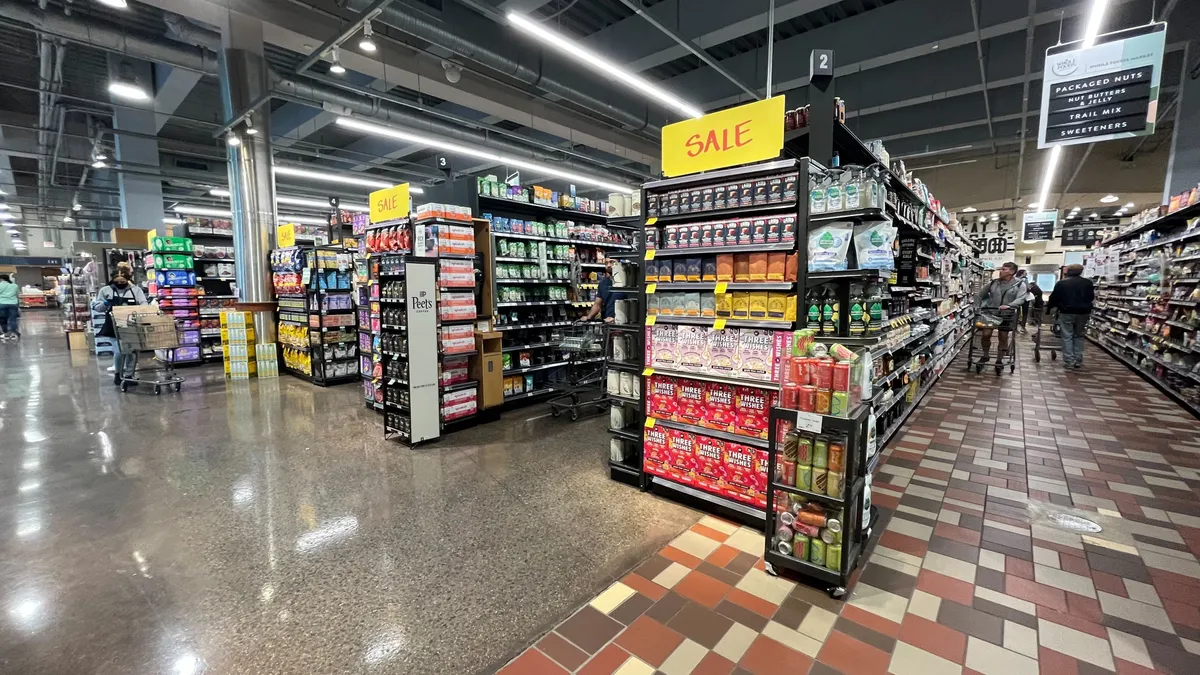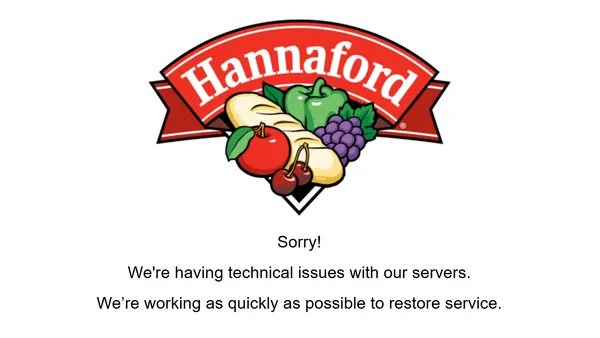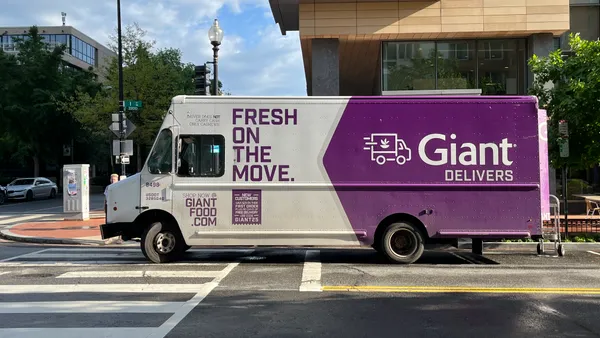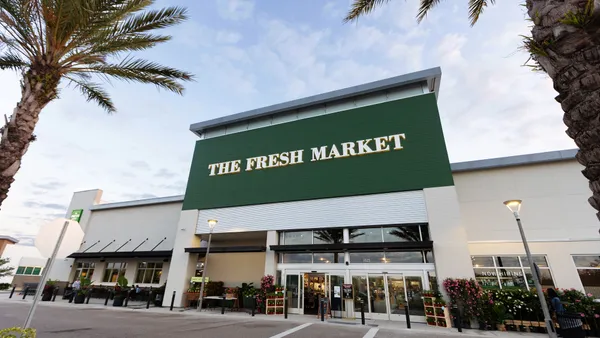Dive Brief:
- Affluent households played a significant role in driving Walmart’s online grocery growth during the first half of 2024 even as lower income households remain the retailer’s core e-grocery customer segment, according to research from Brick Meets Click and Mercatus.
- The growth stems from Walmart’s higher-income households spending more online and ordering more frequently than other customer segments.
- Walmart continues to be grocers’ biggest competitor in the online grocery market, capturing an all-time high percentage of e-commerce grocery dollars during 2024’s second quarter while grocers lost online sales, the firms noted last month.
Dive Insight:
Walmart’s growing popularity with higher-income households comes “at the expense” of supermarkets, hard discounters and Target, Brick Meets Click reported, with each posting a drop in online grocery sales with higher-income households.
Walmart’s most affluent customer segment, which makes more than $200,000 in annual income, now makes up 8% of its average monthly active user base. That affluent monthly user base has increased five times faster over the past year than its overall average monthly active users have, the firms found.
“Affluent households that shop online for groceries at Walmart spend 1.5 times more each month than households in the lowest income bracket, making them a very attractive customer segment to target and win over,” David Bishop, partner at Brick Meets Click, said in a statement.
The rise of the affluent household segment for Walmart also comes as lower-income households pull back on their online spending across many grocery formats and banners, Brick Meets Click noted.
Lower-income households — households making less than $50,000 a year — accounted for 41% of Walmart’s average monthly active users compared to 36% for hard discounters, 30% for supermarkets and 28% for Target, per the report. But while Walmart’s sales for this customer segment dipped 6%, supermarkets and Target saw a drop of 20%.
Supermarkets, hard discounters and Target also saw a decline in overall average order values for online grocery purchases while Walmart’s average order value for affluent households jumped more than 40% compared to the same time last year, to $119.
Nearly 17% of Walmart’s monthly active users also bought groceries online from a supermarket format within the same month during the first half of 2024, a drop of 28 basis points versus the 2023 period. This drop was “entirely driven by less cross-shopping among Walmart’s least and most affluent households, signaling that Walmart may be capturing a greater share of wallet for these segments,” according to BMC.
Brick Meets Click and Mercatus’ report is based on 10,529 survey responses collected between January and June of 2023 and 10,501 responses collected between January and June of 2024.













